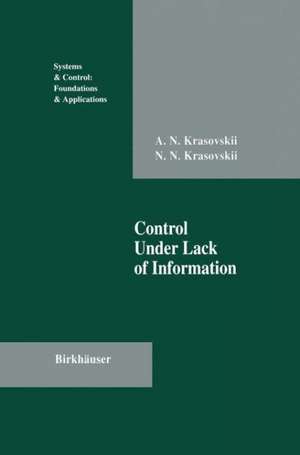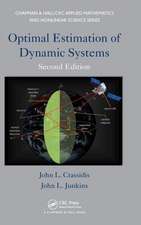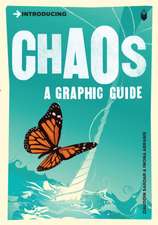Control Under Lack of Information: Systems & Control: Foundations & Applications
Autor Andrew N. Krasovskii, Nikolai N. Krasovskiien Limba Engleză Paperback – 27 sep 2011
Din seria Systems & Control: Foundations & Applications
- 18%
 Preț: 1050.35 lei
Preț: 1050.35 lei - 17%
 Preț: 490.57 lei
Preț: 490.57 lei - 15%
 Preț: 654.95 lei
Preț: 654.95 lei - 15%
 Preț: 654.43 lei
Preț: 654.43 lei - 15%
 Preț: 641.85 lei
Preț: 641.85 lei -
 Preț: 404.51 lei
Preț: 404.51 lei -
 Preț: 400.10 lei
Preț: 400.10 lei -
 Preț: 394.51 lei
Preț: 394.51 lei - 15%
 Preț: 640.37 lei
Preț: 640.37 lei - 15%
 Preț: 635.80 lei
Preț: 635.80 lei - 15%
 Preț: 646.11 lei
Preț: 646.11 lei - 18%
 Preț: 790.28 lei
Preț: 790.28 lei -
 Preț: 382.36 lei
Preț: 382.36 lei -
 Preț: 386.39 lei
Preț: 386.39 lei - 18%
 Preț: 946.24 lei
Preț: 946.24 lei - 18%
 Preț: 1395.94 lei
Preț: 1395.94 lei - 18%
 Preț: 961.10 lei
Preț: 961.10 lei - 18%
 Preț: 968.19 lei
Preț: 968.19 lei -
 Preț: 388.34 lei
Preț: 388.34 lei - 15%
 Preț: 645.47 lei
Preț: 645.47 lei -
 Preț: 404.13 lei
Preț: 404.13 lei - 18%
 Preț: 965.02 lei
Preț: 965.02 lei - 15%
 Preț: 649.87 lei
Preț: 649.87 lei - 18%
 Preț: 974.98 lei
Preț: 974.98 lei -
 Preț: 386.00 lei
Preț: 386.00 lei -
 Preț: 393.52 lei
Preț: 393.52 lei - 15%
 Preț: 642.68 lei
Preț: 642.68 lei -
 Preț: 388.72 lei
Preț: 388.72 lei - 15%
 Preț: 655.45 lei
Preț: 655.45 lei - 20%
 Preț: 1003.63 lei
Preț: 1003.63 lei - 15%
 Preț: 648.89 lei
Preț: 648.89 lei - 15%
 Preț: 645.47 lei
Preț: 645.47 lei -
 Preț: 386.00 lei
Preț: 386.00 lei - 18%
 Preț: 952.89 lei
Preț: 952.89 lei -
 Preț: 396.40 lei
Preț: 396.40 lei - 15%
 Preț: 642.68 lei
Preț: 642.68 lei - 15%
 Preț: 650.19 lei
Preț: 650.19 lei
Preț: 390.84 lei
Nou
Puncte Express: 586
Preț estimativ în valută:
74.80€ • 77.80$ • 61.75£
74.80€ • 77.80$ • 61.75£
Carte tipărită la comandă
Livrare economică 14-28 aprilie
Preluare comenzi: 021 569.72.76
Specificații
ISBN-13: 9781461275831
ISBN-10: 1461275830
Pagini: 340
Ilustrații: 322 p.
Dimensiuni: 155 x 235 x 18 mm
Greutate: 0.48 kg
Ediția:Softcover reprint of the original 1st ed. 1995
Editura: Birkhäuser Boston
Colecția Birkhäuser
Seria Systems & Control: Foundations & Applications
Locul publicării:Boston, MA, United States
ISBN-10: 1461275830
Pagini: 340
Ilustrații: 322 p.
Dimensiuni: 155 x 235 x 18 mm
Greutate: 0.48 kg
Ediția:Softcover reprint of the original 1st ed. 1995
Editura: Birkhäuser Boston
Colecția Birkhäuser
Seria Systems & Control: Foundations & Applications
Locul publicării:Boston, MA, United States
Public țintă
ResearchCuprins
Content.- I. Pure Strategies for Positional Functionals.- 1. A model problem.- 2. A model problem for mixed strategies.- 3. Equation of motion.- 4. The positional quality index.- 5. Pure positional strategies.- 6. Statement of the problem.- 7. An auxiliary w-object.- 8. Accompanying points. An extremal shift.- 9. Existence of the Solution.(Value of the game. Optimal strategies).- II. Stochastic Program Synthesis of Pure Strategies for a Positional Functional.- 10. Differential games for typical functionals ?(1) and ?(2).- 11. Approximating functionals.- 12. Stochastic program maximins ?*(1)(·) and ?*(2)(·).- 13. Recurrent construction for the program extremum (i)(·).- 14. Recurrent construction for the program extremum e*(2)(·).- 15. Condition of u-stability for the program extremum e*(1)(·).- 16. Condition of v-stability for the program extremum e*(1) (·).- 17. Approximating Solution of the differential game for ?(1).- 18. Construction of optimal approximating strategies.- 19. Conditions of w-stability and v-stability for the program extremum e*(2) (·).- 20. Approximating Solution of the differential game for ?(2).- III. Pure Strategies for Quasi-Positional Functionals.- 21. Quasi-positional functionals.- 22. The differential game for the functional ?(4).- 23. Calculation of the approximating value of the game for ?(4).- 24. Differential games with the functional ?(3).- 25. Constructions of approximating optimal strategies for ?(3).- 26. Differential games for the functionals ?(i), i = 5 , . . . , 8.- 27. Construction of approximating optimal strategies for games with functionals ?(i), i = 5 , . . . , 8.- 28. Example of constructing the optimal strategies for ?(i).- 29. Example with a quadratic quality index.- 30. Examples of constructing optimalstrategies for positional functionals.- 31. Examples of constructing optimal strategies for quasi-positional functionals.- IV. Mixed Strategies for Positional and Quasi-Positional Functionals.- 32. Mixed strategies Su and Sv.- 33. The motions xsu,v [·] and xsv,u [·].- 34. Statement of the problem in the class of mixed strategies. Existence of the Solution.- 35. Constructions of the values e(s)*1(·) and e(s)*2(·).- 36. Construction of approximating optimal strategies Sua and Sva.- 37. Example with mixed strategies.- 38. The second example with mixed strategies.
Recenzii
"...the book under review is very valuable in the area and the authors ought to be commended for their nice work."
--SIAM Review
"This is an interesting book..."
--Zentralblatt Math
--SIAM Review
"This is an interesting book..."
--Zentralblatt Math











